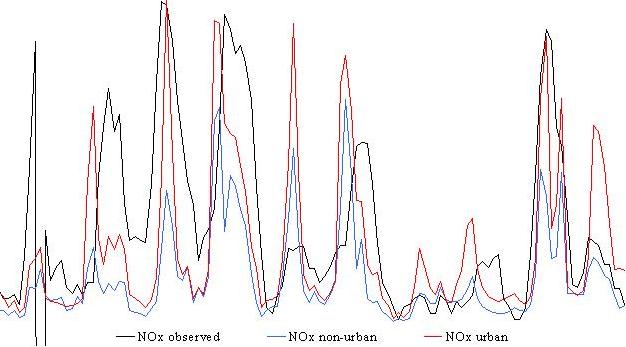



Applied urban dispersion modeling with OML-Urban

What's it all about?
For single, high stack source
configurations, Gaussian plume models give acceptable results. This is
due to the fact that the condition of surface homogeneity is (more or less)
fulfilled. Nowadays severe air pollution problems arise in the ever-growing
cities. Built-up areas feature a different turbulence structure. It is
shown for a specific example which adaptations in the use and computing
code of an applied Gaussian plume model have to be undertaken in order
to apply it to urban environments.
Modification of the OML
An operational multi-source,
multi-receptor Gaussian dispersion model, the Danish regulatory model OML,
has been modified for applications in urban environments. A so-called roughness
sublayer has been introduced into the model to represent the turbulence
characteristics of the lowest part of the surface layer over rough surfaces
like cities. The meteorological preprocessor was enhanced to take into
account an urban energy budget. The performance of the resulting OML-Urban
has been validated for NOx and SO2 for the city of Zurich for the year
1990. For this year, a detailed emission inventory as well as continuous
hourly measurements at four stations are available. The air pollution monitoring
stations used for validation have been divided into different groups, depending
on local influences from nearby roads. The urban modification (roughness
sublayer and changes in the met. preprocessor) results in a 25-35% increase
of the annual mean surface concentration. OML-Urban shows a good reproduction
of the probability density function of predicted concentrations, and the
simulated yearly averaged concentrations show a good correspondence to
observations.
Further information...
...can be found in Chapters
6 and 7 of my PhD.
... or in the paper Modification of an Operational Dispersion Model for Urban Applications.
Or send me an e-mail: peter@dehaan.ch
Back to: Peter
de Haan's home page. last update: 4 Oct 2000 PdH



